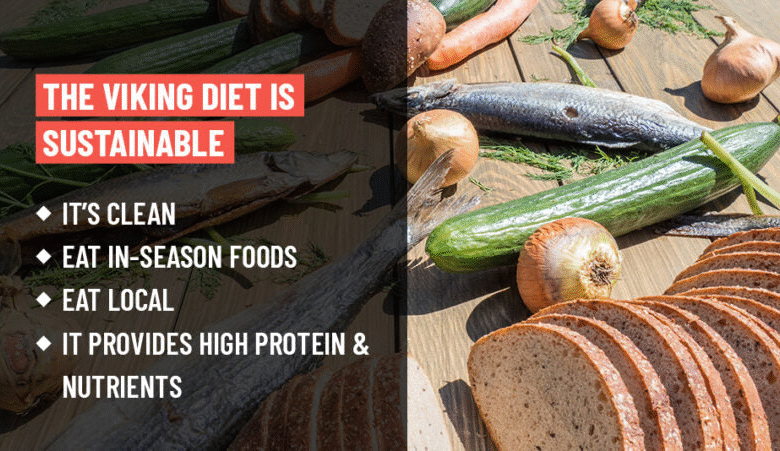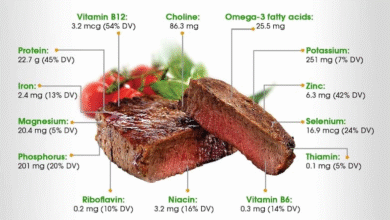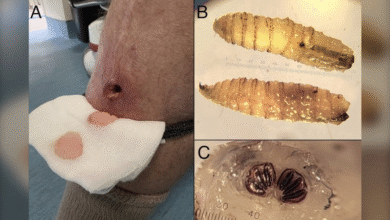Viking Diet: Exploring Ancient Eating Habits for Today

The Viking diet, often highlighted by nutritionists and food enthusiasts alike, is more than just a culinary curiosity; it’s a fascinating glimpse into the ancient eating habits of the Norse people. Characterized by a robust intake of meat, fish, and wholesome vegetables, this diet mirrors principles of today’s Nordic diet, emphasizing fresh and sustainable foods. With a focus on whole foods, the benefits of the Viking diet extend beyond mere nutrition, offering an array of flavors rooted in history. Recent discussions by experts reveal how incorporating these ancient practices can enhance modern meals, making it a worthy consideration for health-conscious individuals today. Curious about how this ancient approach can fit into our contemporary lifestyle? Let’s explore deeper.
The dietary practices of the Norse warriors, often termed the Viking way of eating, have recently come to light as an intriguing option for those seeking a healthier lifestyle. This traditional approach shares many principles with the contemporary Nordic eating paradigm, which emphasizes nutritious and seasonally available ingredients. By focusing on the consumption of natural, unprocessed foods, the Viking diet reveals its advantages: it supports sustainable eating habits while providing essential nutrients. As this ancient dietary framework continues to gain popularity, it raises intriguing possibilities for integrating these historical practices into modern meal planning. Let’s delve into the components and benefits of these time-honored culinary traditions.
Understanding the Viking Diet: A Historical Perspective
The Viking diet, rooted in ancient Scandinavia, provides insights into health practices of the Norse people from the 8th to the 11th centuries. This way of eating primarily consisted of unprocessed, whole foods sourced from the environment, forming a connection between dietary habits and local agricultural practices. By consuming what was readily available—such as fish from the sea, grains from the fields, and vegetables from their gardens—the Vikings maintained a sustainable lifestyle that mirrored the principles of the modern Nordic diet.
A key aspect of the Viking diet lies in its emphasis on whole foods and nutritional integrity. The Norse diet was rich in meats, seafood, and seasonal vegetables, representing a true whole foods diet that prioritized natural ingredients over processed alternatives. This ancient eating approach not only offered sustenance but also promoted health, allowing individuals to thrive in a challenging environment. Understanding these ancient eating habits can inspire today’s dietary choices in pursuing a healthier lifestyle.
Key Components of the Viking Diet
The Viking diet is characterized by a variety of foods, including hearty meats, fresh vegetables, and nutrient-rich grains. Staples such as herring, salmon, and other seafood provided essential omega-3 fatty acids, while meats from livestock ensured an adequate protein intake. Vegetables like onions, cabbage, and root crops complemented these protein sources, creating well-rounded meals that nourished the body effectively. The inclusion of nuts and fruits added vitamins and minerals, enhancing the diet’s overall nutritional value.
Grains also played a crucial role, with rye, barley, and oats forming the backbone of many Viking meals. These grains provided fiber, which supports digestion and sustained energy levels. The combination of these food groups reflects the essence of sustainable foods that the Vikings practiced, as they relied on the land and waters around them to support their nutritional needs without depleting their resources. Today, reintroducing these components can lead to the eating habits associated with the Nordic diet.
Benefits of Incorporating the Viking Diet Today
Adopting elements of the Viking diet offers numerous health benefits, aligning with modern nutritional principles. The focus on whole foods promotes a balanced diet that can significantly reduce the intake of refined sugars and unhealthy fats. Furthermore, the protein-rich nature of the Viking diet aids in muscle development, hunger management, and overall physical health, making it ideal for individuals seeking to enhance their well-being through better eating habits.
Incorporating sustainable foods, such as fresh seafood and grass-fed meats, not only supports personal health but also encourages environmentally responsible consumption. The Viking commitment to utilizing local resources resonates with contemporary trends toward sustainability in diet. By emphasizing a diet centered on whole foods and mindful eating, one can mitigate various health risks associated with modern processed diets, embodying the benefits of Viking dietary practices.
Modern Adaptations of Viking Diet Principles
While adhering strictly to the Viking diet isn’t practical for many, modern adaptations are entirely achievable. By focusing on whole foods, individuals can recreate hearty meals inspired by ancient Viking traditions. Incorporating lean meats, a variety of fish, and fresh vegetables into daily meals aligns perfectly with today’s health trends, allowing individuals to enjoy robust flavors without sacrificing nutrition.
Moreover, the Viking diet serves as a reminder for individuals to minimize their intake of processed foods and sugars. In a world flooded by convenience products, engaging in home cooking with quality ingredients encourages healthy eating habits reminiscent of the Norse lifestyle. This shift not only honors ancient eating habits but also provides a sustainable approach to modern dining.
Navigating the Challenges of the Viking Diet
Despite its many benefits, the Viking diet isn’t without challenges. One main concern is the high saturated fat content from the abundance of animal products consumed. Although saturated fats can be part of a diet when managed correctly, excessive intake may lead to cardiovascular issues. Modern dietary guidelines recommend a balanced approach to fats, advocating for healthy fats found in plants and fish instead.
Additionally, the use of preserved foods that often contain high sodium levels poses health risks over time. Balancing consumption by moderating preserved items and focusing on fresh, whole foods can help mitigate these issues. It’s essential for anyone considering the Viking diet to be mindful of these potential drawbacks while finding creative ways to navigate their modern dietary needs.
The Role of Seafood in the Viking Diet
Seafood was a cornerstone of the Viking diet, providing not just sustenance but also essential nutrients that were critical for survival. Rich in omega-3 fatty acids, fish such as herring and salmon contributed to heart health and cognitive function. This reliance on marine resources mirrors the modern understanding of the benefits of seafood in providing high-quality protein and important micronutrients like vitamin D and selenium.
Incorporating traditional Viking seafood into a modern diet encourages a healthier lifestyle while honoring ancient customs. Seafood-focused meals—prepared with fresh herbs and complemented by whole grains—can enhance both flavor and nutrition. Emphasizing seafood consumption not only promotes individual health but also encourages sustainable fishing practices, thus reflecting the eco-conscious mindset of today’s health advocates.
Vegetable Varieties in the Viking Diet
Vegetables played an essential role in the Viking diet, contributing a wealth of vitamins, minerals, and fiber that supported overall health. Staples included root vegetables such as turnips and carrots, which could be stored through the harsh winters. The seasonal availability of fresh vegetables not only added variety to the diet but also ensured a robust intake of essential nutrients throughout the year, showcasing the dietary wisdom of ancient cultures.
The versatility of these vegetables allowed Vikings to create hearty stews and dishes that were both comforting and nutritious. Incorporating these vegetables into modern meals emphasizes the benefits of a plant-rich diet that is low in calories but high in essential nutrients. By reintroducing these ingredients, individuals can benefit from the ancient wisdom of the Viking diet while fostering a connection to sustainable eating practices.
Sustainable Foods: A Viking Approach
The Viking diet exemplified sustainability, as it was deeply rooted in the available resources of their environment. By relying on locally sourced fruits, vegetables, and proteins, the Vikings maintained a balance between dietary needs and environmental stewardship. This ancient practice of prioritizing sustainable foods resonates with contemporary movements towards eco-friendly diets and sustainable agriculture.
Today, practitioners of the Viking diet can take inspiration from this sustainability ethos by choosing organic and local food sources whenever possible. Focusing on green practices not only supports personal health but also contributes to the well-being of the planet. The modern reinterpretation of these ancient eating habits fosters a lifestyle that honors the principles of sustainability while enjoying the flavors of the past.
The Future of the Viking Diet in Modern Cuisine
As interest in ancient culinary practices continues to rise, the Viking diet is poised to play a significant role in modern cuisine. With its focus on whole foods, plant-based ingredients, and sustainable farming, this diet aligns perfectly with current health trends. Cookbooks, online resources, and cooking classes centered on Viking-inspired dishes are emerging, making it easier for people to explore these ancient flavors.
The integration of Viking diet principles into everyday cooking presents an opportunity to revitalize traditional cuisines. As more people seek healthier eaters, incorporating aspects of the Viking lifestyle—such as whole grains, lean proteins, and seasonal vegetables—can help bridge the gap between ancient habits and contemporary tastes, creating a culinary fusion that both honors the past and embraces the future.
Frequently Asked Questions
What is the Viking diet and how does it relate to the Nordic diet?
The Viking diet refers to the ancient eating habits of the Norse people from the 8th to the 11th centuries, often considered part of the broader Nordic diet. This diet emphasizes whole foods like meats, fish, vegetables, and grains, reflecting the sustainable food practices of that era.
What are the main benefits of the Viking diet?
The benefits of the Viking diet include its focus on whole foods that are nutrient-dense, high in protein, and rich in fiber. This approach may promote better health through sustainable food choices, replicating ancient eating habits that prioritize natural ingredients.
How can I incorporate sustainable foods into my diet like the Viking diet?
To incorporate sustainable foods similar to the Viking diet, focus on locally sourced meats, seafood, seasonal vegetables, and whole grains. Preparing meals at home using these ingredients can help emulate the clean eating habits characteristic of the Viking and Nordic diets.
What kinds of whole foods are included in the Viking diet?
Whole foods in the Viking diet include a variety of meats (like beef, pork, and poultry), seafood (such as herring and salmon), vegetables (onions, carrots, and cabbage), nuts, berries, grains (rye, and oats), dairy, and eggs, all contributing to a nutritionally balanced eating pattern.
Are there any drawbacks to following the Viking diet?
Yes, while the Viking diet has many advantages, it also presents potential drawbacks, such as high saturated fat levels from meat and dairy and increased sodium intake from preserved foods. Moderation and mindful food choices are essential for a balanced approach.
Can I modernize the Viking diet for today’s health needs?
Absolutely! To modernize the Viking diet, focus on integrating more fiber-rich carbohydrates, reducing processed foods, and emphasizing fresh, whole ingredients. Cooking at home with quality ingredients allows for healthier adaptations of ancient eating habits.
What types of beverages were consumed on the Viking diet?
The Viking diet typically included beverages such as beer and mead, which were sometimes consumed by children due to the scarcity of clean water. However, moderating alcohol intake is advisable for today’s health-conscious diets.
How does the Viking diet promote healthy eating habits today?
The Viking diet promotes healthy eating habits by encouraging a diet rich in whole foods, sustainable sources of protein, and fiber. By integrating these elements into modern eating patterns, individuals can cultivate a healthy lifestyle reflective of ancient eating habits.
| Key Components of the Viking Diet | Description | |
|---|---|---|
| Vegetables | Onions, garlic, leeks, cabbage, carrots, turnips, parsnips | |
| Nuts | Walnuts, hazelnuts | |
| Fruits | Raspberries, bilberries, plums, wild apples | |
| Meats | Cattle, pigs, sheep, ducks, hens, horses, geese | |
| Seafood | Herring, salmon, mackerel, whale, seal meat | |
| Grains | Rye, barley, oats, millet, buckwheat | |
| Dairy | Milk, butter, cheese | |
| Eggs | Fresh eggs for cooking | |
| Beverages | Beer and mead, sometimes given to children | |
Summary
The Viking diet is a fascinating exploration of ancient eating habits that emphasizes whole foods and natural ingredients. Not only does this diet highlight the nutritional wisdom of the Norse people from centuries past, but it also encourages modern eaters to focus on healthier, whole food choices. By adopting aspects of the Viking diet today, individuals can enhance their health by incorporating more vegetables, lean meats, and whole grains while being cautious of saturated fats and processed foods. Overall, the Viking diet presents an exciting opportunity to enrich contemporary cuisine with historical nutrition knowledge.




